Damage is visible to Launch Pad 0A following catastrophic failure of Orbital Sciences Antares rocket moments after liftoff from NASA’s Wallops Flight Facility, VA, on Oct. 28, 2014, at 6:22 p.m. Credit: Ken Kremer – kenkremer.com
Story updated with link to Ken Kremer interview with NBC Nightly News[/caption]
NASA WALLOPS FLIGHT FACILITY, VA – Some damage is clearly discernible to the Antares rocket launch pad in the aftermath of the sudden catastrophic explosion that completely consumed the rocket and its NASA contracted cargo just seconds after its liftoff NASA’s Wallops Flight Facility, Va, at 6:22 p.m. EDT on Tuesday, October 28.
From a public viewing area about two miles away, I captured some side views of the pad complex and surroundings.
Check out my before and after views of the launch pad to compare the scenery
I was interviewed by NBC News and you can watch the entire story and see my Antares explosion photos featured at NBC Nightly News on Oct. 29 here.
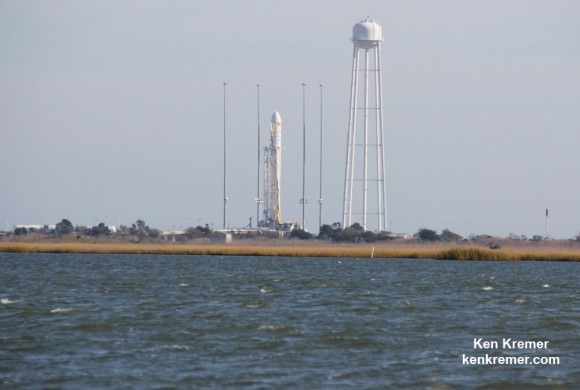
The aborted blastoff of the 14 story Antares rocket ended in a raging inferno that set the sky on fire in raging inferno starting barely 10 seconds after what appeared to be a normal liftoff.
Looking at the photos, its immediately apparent that two of the pads four lightning suppression rods have been blown away. Indeed in the photos one can see them being hurled away in the swirling inferno.
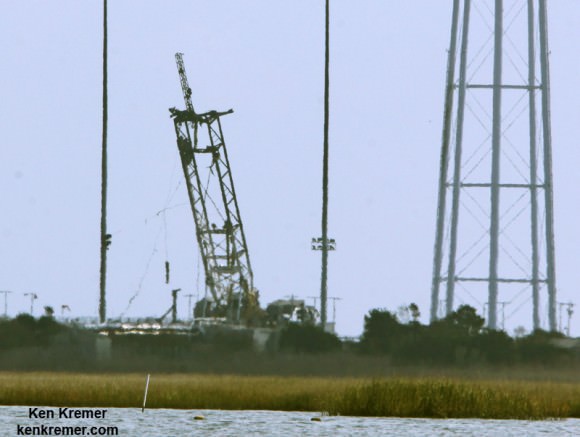
There is also some noticeable damage to the transporter erector launcher used to move transport and raise the rocket to its vertical launch position.
The good news is that the launch ramp leading to the launch ramp leading to the launch mount is still intact. The giant water deluge tower is still standing.
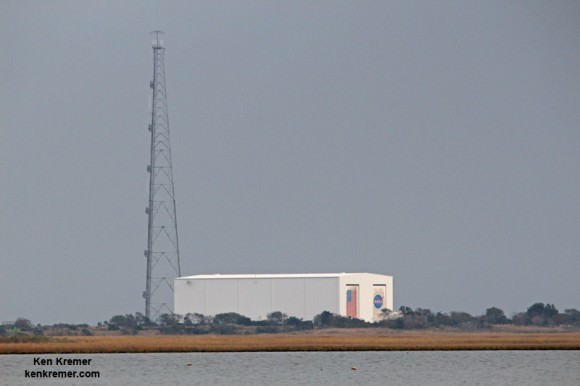
Likewise the processing facility where the Antares rocket undergoes final assembly and integration with the Cygnus cargo module appears to have escaped damage, at least on the two sides visible to me.
The outer structure of the Horizontal Integration Facility (HIF) appears intact with no significant harm following the launch failure. The HIF is located about 1 mile north of pad 0A.
The most severe damage was suffered by the nearby sounding rocket launcher with the entire side facing the pad blown away.
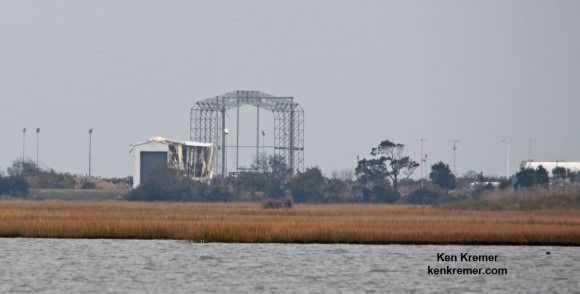
Watch here for Ken’s onsite reporting direct from NASA Wallops.
Stay tuned here for Ken’s continuing Earth and Planetary science and human spaceflight news.
Ken Kremer


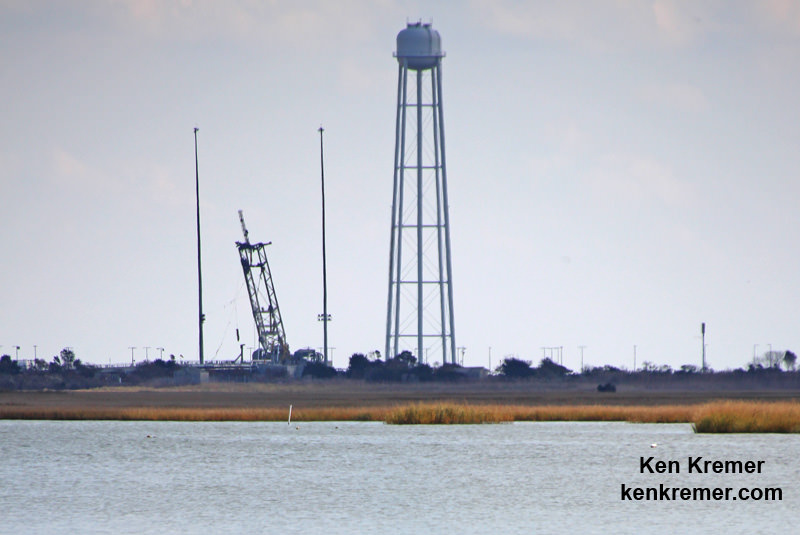
I guess most of the blast feathered out into the air. A bunker buster would have sent the concrete of that launchpad flying into the air. I wondered why the reporter in the video was brought to tears witnessing the explosion first-hand. I suppose it was just so huge that his mind was sent into overload. I’ve seen a deliberate detonation of around fourteen tons of varied military ordinance (Russian and Chinese) that reminded me of the death star exploding before- it left a massive smoke ring in the sky that caught the sunlight and made it almost beautiful. We cheered in delight, but i think it was because it was expected whereas this recent rocket explosion was probably not expected at all- very jarring. I thank God that this was not a manned mission. I also pity the fool who decides to use refurbished used Russian engines to launch cargo from the US. SpaceX anyone?